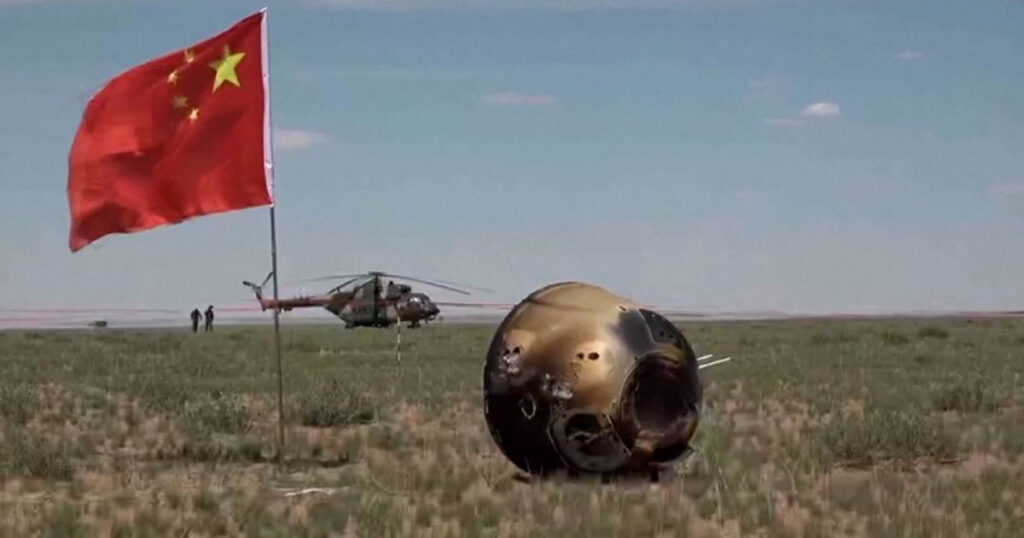Return address
The Chinese lunar probe Chang’e 6 has done that officially back the first samples collected from the far side of the moon to scientists here on Earth, a major achievement that highlights the country’s rapidly advancing space ambitions.
The probe landed in Inner Mongolia on Tuesday, delivering the incredibly rare package, which is expected to contain 2.5 million year old volcanic rock.
The mission launched in early May and landed about a month later. Within just over 48 hours, the probe collected some samples using a drill and was launched back into space to begin its weeks-long return journey.
It even had time to deliver several scientific payloads to the lunar service, including an instrument that instantly detected the presence of negative ions.
China was the first country to land on the far side of the moon in April 2019 and remains the only country to ever do so – let alone twice.
https://twitter.com/CNSAWatcher/status/1805506104618536991
Crater face
The far side of the moon, which faces permanently away from Earth, remains far less explored than the much better understood near side. The difficult terrain, with tall craters and huge boulders, makes it an extremely challenging place to explore.
Scientists hope to discover useful resources there, including water ice, which future explorers could use as a source of water, oxygen and hydrogen.
“It is incredibly exciting to see this landing successful,” said Scottish astronomer Catherine Heymans told the BBC. “The geological activity on the moon is very different on the near and far sides, and it has been a big puzzle why we see those differences.”
Researchers are now ready to study the more than four kilograms of samples as they try to unravel the mysteries surrounding the moon’s formation and evolution.
And they can barely contain their excitement.
“It’s a gold mine… a treasure chest,” James Head, professor of planetary geosciences at Brown University told CNN. “International scientists are absolutely enthusiastic about the mission.”
More about the mission: Chinese lander instrument detects negative ions on the far side of the moon

